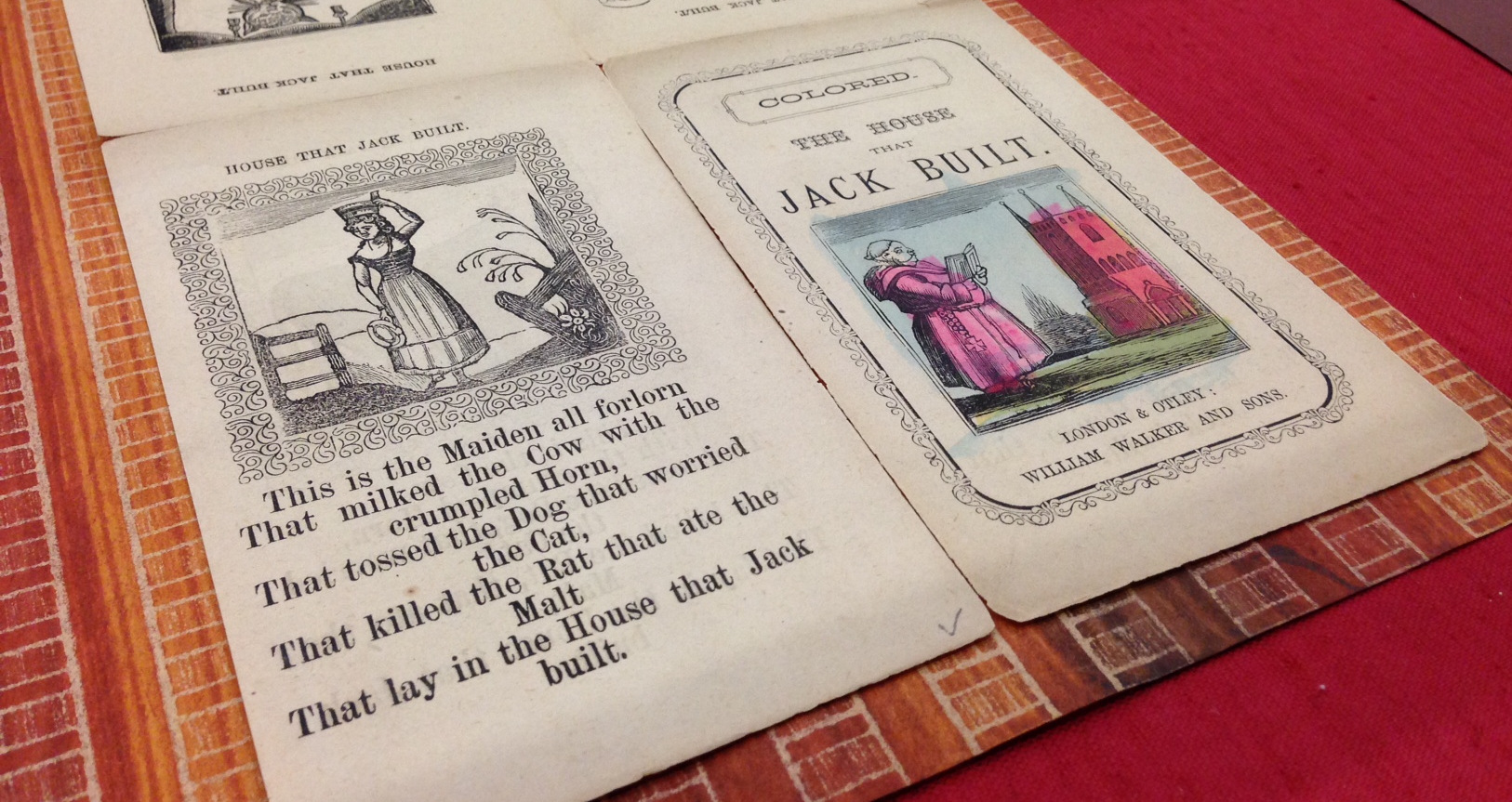![The history of curious and wonderful birds. New York : Printed and sold by Mahlon Day, [between 1825 and 1833]](http://news.library.mcgill.ca/wp-content/uploads/2014/04/history-of-birds-300x300.jpg)
The history of curious and wonderful birds. New York : Printed and sold by Mahlon Day, [between 1825 and 1833] Photo credit: Merika Ramundo
The McGill Library’s Chapbook Collection contains over 900 English-language chapbooks published in England, Scotland, Ireland and the northeastern United States. The majority of the chapbooks in the collection were published in the early 19th century and from chapbooks that have been identified in three special collections in the Rare Books and Special Collections Library. The Sheila R. Bourke Collection of Children’s Literature, a major research collection in children’s literature, contains 412 chapbooks. The Children’s Collection contains 321 chapbooks and the Main Collection yields the remaining 272 works. They contain stories based upon medieval romance, English legends and folklore, or abridged from popular literature for adults. Children’s chapbooks of popular nursery rhymes, fairy tales and books of instruction are also part of the chapbook collection.
The extensive collection is growing every year. Richard Virr, Chief Curator of Rare Books and Special Collections explained, “Ours is an ongoing project. We are acquiring chapbooks on a regular basis. We haven’t digitized them yet but we acquired almost a dozen and a half this past year. A notable acquisition is a very rare Canadian chapbook from 1809, printed in Montreal called Wisdom in Miniature.”
Through a generous donation from the Harold Crabtree Foundation, digital facsimiles have been prepared and made accessible online. To complement the creation of this digital collection, the Library recently launched an exhibition entitled Celebrating the Digitization of McGill Library’s Chapbook Collection: An exhibition of British and American chapbooks.
Digitizing McGill Library’s Chapbook Collection
It takes a lot of time, patience, and resources to digitize these tiny treasures and make them accessible to the world. The work to create the website was undertaken by three McGill Library departments: Rare Books and Special Collections, Library Technology Services and Collection Services.
Collection Services created cataloguing records and metadata elements. Library Technology Services digitized the chapbooks, scanned the images to create text files, and provided the infrastructure to transfer metadata. They also created and will continue to maintain the website. Rare Books and Special Collections coordinated the project and provided access to the collection. The Interacting with Print Research Group also provided a collection of essays on chapbooks published in Great Britain.
The bulk of the digitization work was done over 300 hours between February and May 2012 by two students. The chapbooks were digitized in-house using a book easel and a Nikon D3X camera mounted on a camera copy stand. The team captured high resolution images as a two-page spread to ensure that the pages lined up correctly in Internet Archive Book-Reader, a free, open source software. The post processing was performed using Adobe Photoshop. From July 2012 to May 2013, four students were charged with text proofing all materials. Professional software was used for Optical Character Recognition (OCR) and to flag potential spelling errors for students to correct. The software was used to export text searchable PDFs.

The digital images were prepared in house using a linhof book cradle and a Nikon D3X camera mounted on a camera copy stand. Photo credit: Merika Ramundo
Any project of this magnitude always encounters some obstacles along the way. “Nearly all the chapbooks are softcover items that were fairly easy to digitize using the book easel. However, in some cases, we digitized thick tightly bound collections of chapbooks. This made the book difficult to open and the text was hidden in the gutter (inside margins or blank space between two facing pages). When text is hidden in the gutter, it was difficult for text recognition and we had to verify the originals by eye,” said Greg Houston, Digitization Administrator responsible for overseeing the students’ work. “Other challenging items included uncut items, fold outs and flap books that had to be digitized in the right sequence of flap openings.”
The fully searchable website was designed, developed, and tested in the spring of 2013. It launched on August 15, 2013 for all to enjoy.
The exhibit
Selections from the exhibit entitled Celebrating the Digitization of McGill Library’s Chapbook Collection: An exhibition of British and American chapbooks illustrate a range of subject genres, printers and publishing locations on both sides of the Atlantic. Included are evangelical publications such as Hannah More’s Cheap Repository Tracts and the Religious Tract Society who modeled their publications on the chapbook format in an attempted to reform the lower classes.
The exhibition displays selected works from the chapbook categories: Books of Instruction; Geographical Description, Local History and Natural History; Jest Books, Humorous Fiction, Riddles; Legendary Romances, Fairy Stories and Folk Tales in Prose; Metrical Tales and Other Verse; Nursery Rhymes; Prose Fiction; Religious and Moral; and Song Books.
Arranging the display of miniature items is not an easy feat. Liaison Librarian Sharon Rankin, responsible for preparing the exhibit said, “Great care has been used in the exhibition to select openings of the works to ensure that these fragile items are not damaged.”
In-person or online, the McGill Chapbook Collection is truly a jewel of the library. Richard Virr agrees. “Lots of institutions have chapbook collections, but what is special about ours is the variety and the fact that no one, to my knowledge, has undertaken such a massive digitization project. This means researchers, students and the general public have a large, accessible resource to draw from. Plus they are just neat to look at!”
We invite you to come see for yourself.
For more information on the collection’s content and digitization process, visit the Chapbooks blog and website.













Leave a Reply
You must be logged in to post a comment.